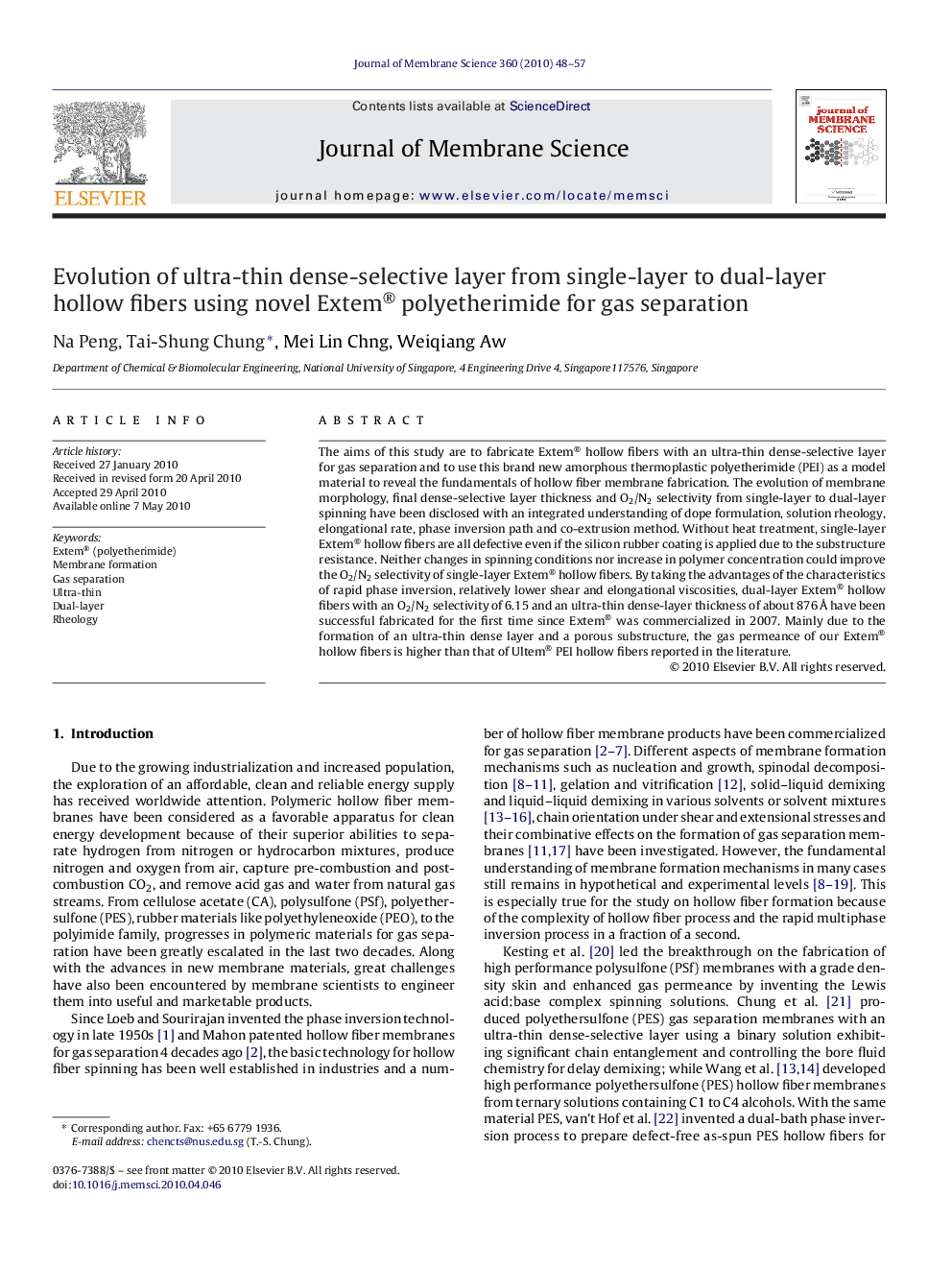| Article ID | Journal | Published Year | Pages | File Type |
|---|---|---|---|---|
| 635882 | Journal of Membrane Science | 2010 | 10 Pages |
The aims of this study are to fabricate Extem® hollow fibers with an ultra-thin dense-selective layer for gas separation and to use this brand new amorphous thermoplastic polyetherimide (PEI) as a model material to reveal the fundamentals of hollow fiber membrane fabrication. The evolution of membrane morphology, final dense-selective layer thickness and O2/N2 selectivity from single-layer to dual-layer spinning have been disclosed with an integrated understanding of dope formulation, solution rheology, elongational rate, phase inversion path and co-extrusion method. Without heat treatment, single-layer Extem® hollow fibers are all defective even if the silicon rubber coating is applied due to the substructure resistance. Neither changes in spinning conditions nor increase in polymer concentration could improve the O2/N2 selectivity of single-layer Extem® hollow fibers. By taking the advantages of the characteristics of rapid phase inversion, relatively lower shear and elongational viscosities, dual-layer Extem® hollow fibers with an O2/N2 selectivity of 6.15 and an ultra-thin dense-layer thickness of about 876 Å have been successful fabricated for the first time since Extem® was commercialized in 2007. Mainly due to the formation of an ultra-thin dense layer and a porous substructure, the gas permeance of our Extem® hollow fibers is higher than that of Ultem® PEI hollow fibers reported in the literature.
